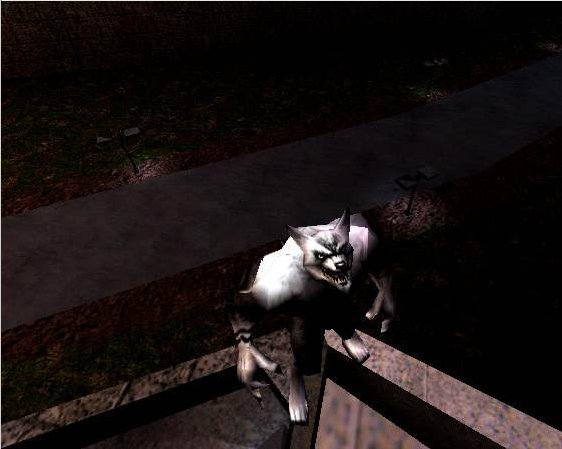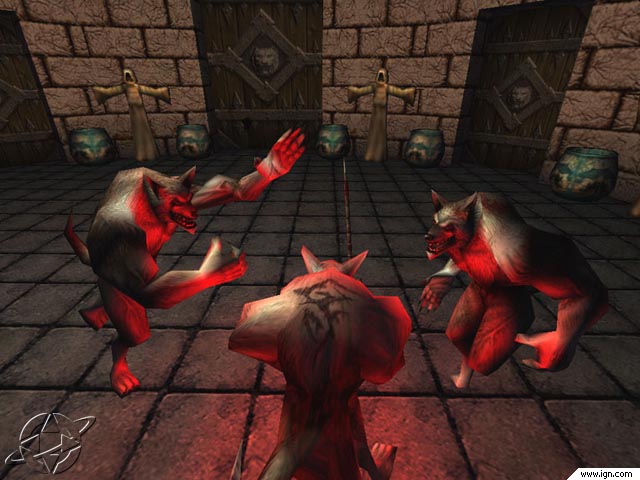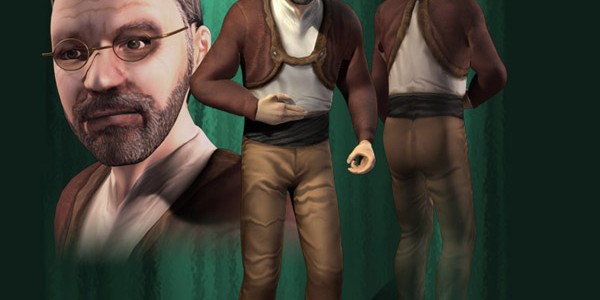Werewolf: The Apocalypse was a game planned for PC that was being produced by ASC Games and developed by Dreamforge Intertainment, both of which have worked together previously on the horror point and click game Sanitarium for PC. The game was based on the popular pen and paper tabletop series of the same name created by White Wolf Publishing and would have run on the Unreal engine by Epic Games. The game, along with other popular series such as Vampire: The Masquerade and Mage: The Ascension, took place in the “World of Darkness” universe wherein a secret battle for the fate of the Earth is waged by various factions of monsters, ghosts and demons behind the scenes of seemingly normal everyday life. Travis Williams, who was one of the original developers on the original tabletop version of the game, was the executive producer of the game and stated that he was there to make sure the game was as “authentic to the original” as possible. Because of this the game’s storyline incorporated the already extensive backstory associated with the series.

The protagonist was a teenager named Ryan Mcullough who discovers that he is a member of the Garou tribe of werewolves after being attacked by monsters who serve the Wyrm – a supernatural force of destruction that wants to warp reality by corrupting all living things with its sickness. Ryan comes to find that not only is he a werewolf but that he also carries the blood of the White Howlers – a powerful tribe who has been extinct for years after trying to stop the Wyrm and falling under its corruption. With his new found abilities Ryan goes on a globetrotting journey to save the heart of the Earth itself from the clutches of the grotesque Wyrm as well as finding out the truth behind his father’s disappearance when he was still a child. Along the way he makes allies with fellow werewolves and other mystical beings to help him battle the twisted agents of the Wyrm such as the Fomori, humans who have been possessed by evil spirits that serve the Wyrm, and the Black Spiral Dancers, werewolves that have been corrupted by the Wyrm. His travels take him to places such as Greece and the Pentex Corporation, which is a powerful conglomerate that serves as a front for the Wyrm.
Gameplay has been described by Williams in several interviews as being similar to the Jedi Knight series of games as there would have been both long range and close combat fighting options along with the ability to switch between 1st and 3rd person camera angles. The player would be given the choice to shapeshift on the fly between Ryan’s human form, his “Crinos” form – which is similar to the popular image of a werewolf, and his “Lupus” form – which is a regular wolf. In human form the player would utilize a series of guns ranging from pistols to machine guns to “experimental” weaponry while the Crinos form consisted of melee combat with claws and a large sword called the Klaive which can be imbued with powers such as fire or ice damage. To make melee combat easier the player would be able to lock on and strafe around enemies while in the Crinos form.

Another aspect about the game that was similar to Jedi Knight was the ability to unlock special abilities, known as “gifts” in the game, for all three of Ryan’s forms depending on the choices the player made throughout the game. There were over 20 available and they would have been divided into 3 categories- temporary, permanent, and Klaive effects. An example of an “evil” path gift was the Seed of Gaia, which was a seed you could shoot into enemies that would make spikes shoot out from their insides, and a “good” gift example was a mystical armor spell known as Luna’s Armor.
A multiplayer versus mode was also planned for the game in which the player would have been able to choose characters out of the 13 different tribes of werewolves to do battle with one another. It also featured “totems” that you could attach to your character to give them special abilities. Many standard multiplayer game modes would have been available such as Blood Moot (deathmatch) as well as King of the Hill and a Tag mode.
Information about the game was being steadily released from late 1998 all the way up until September 1999 when ASC announced that the game was put on hold indefinitely. However despite this announcement they assured IGN that the game would still be released in Q1 2000 even though there were reports at the time that ASC Games would be permanently closing their doors. The reports ended up being true and ASC games shut down on January 7th, 2000 with Dreamforge Entertainment following suit shortly thereafter. A majority of the cut scenes for the game have been released since as well as some screenshots and a brief gameplay video that shows Ryan running around a warehouse area and transforming between his 3 different forms. A 10 part prequel series written by White Wolf veteran Phil Bucato was also released on the ASC website as the game was leading up to its release, but all of the chapters seemed to have disappeared along with the ASC website. Another game Dreamforge Entertainment was working on, Myst IV, was taken over and finished by Ubisoft Montreal.
Thanks to Jon and Mix Bouda for the contribution!
Images:
Videos:

